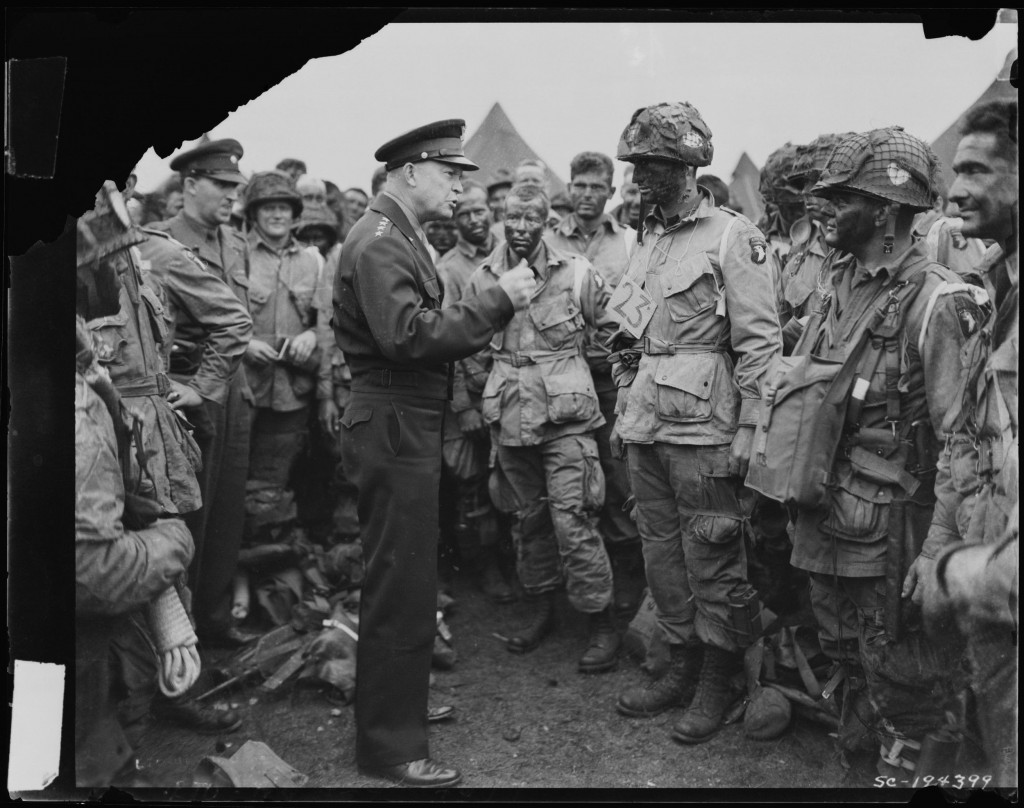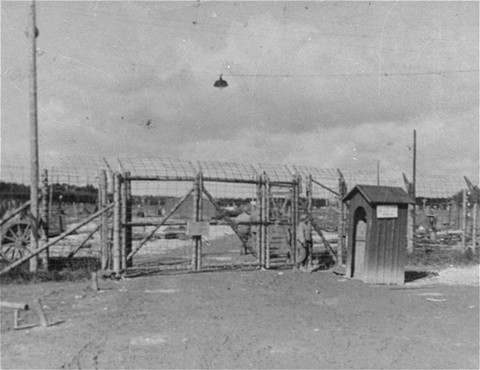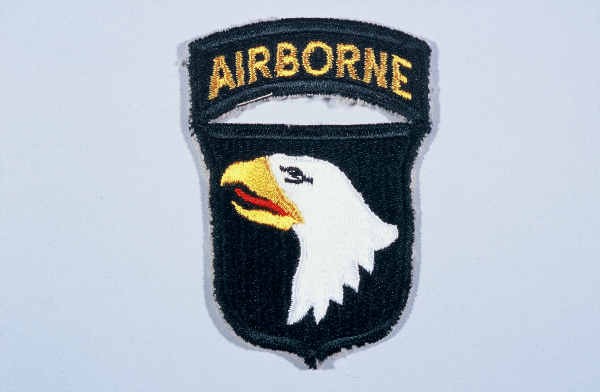
The 101st Airborne Division during World War II
In 1985, the United States Holocaust Memorial Museum and the US Army Center of Military History began a program to honor US Army divisions that took part in the Allied liberation of Nazi camps. The US Army Center of Military History defines a liberating division as one whose official records show its presence at a camp within 48 hours of the first soldier’s arrival. The 101st Airborne Division is among the 36 US divisions that have been recognized to date.
Key Facts
-
1
US, British, Soviet, and Canadian troops encountered concentration camps and other sites of Nazi crimes as they advanced across Europe in 1944 and 1945.
-
2
The Allied soldiers liberated sick and starving camp prisoners from Nazi tyranny. They also provided them with food, clothing, and medical aid.
-
3
The United States Holocaust Memorial Museum and the US Army Center of Military History have recognized 36 US divisions for their role in the liberation of Nazi camps.
101st Airborne Division Campaigns during World War II

Established in 1942, the 101st Airborne Division parachuted into Normandy, France, near Utah Beach on D-Day (June 6, 1944). There, the "Screaming Eagles" division engaged in fierce fighting with German forces.
In September 1944, the unit was dropped into the Netherlands, where it captured the city of Eindhoven. The 101st was deployed to Belgium during the Battle of the Bulge in December 1944 and was subsequently surrounded in Bastogne by German troops. The unit refused to surrender and held out until the 4th Armored Division arrived to provide it with badly needed support. In January 1945, the 101st moved into Alsace; in April, its troops advanced into the Rhineland. By war's end, the division had reached the Bavarian Alps.
The 101st Airborne Division and the Liberation of Kaufering

During the 101st's drive into southern Germany, the unit uncovered Kaufering IV, one of 11 camps in the Kaufering complex in the Landsberg region. The Kaufering complex was under the administration of the Dachau concentration camp. At its height, the camp held more than 3,600 prisoners, but in the days before US troops arrived, the SS had evacuated many of the prisoners on a death march south in the direction of Dachau. Hundreds of inmates were too ill or weak to make the trek, so the SS guards set fire to the barracks to prevent their liberation by US troops. When the 12th Armored Division and 101st Airborne Division arrived at Kaufering IV on April 27 and 28, respectively, the soldiers discovered some 500 dead inmates. In the days that followed, the US Army units ordered the local townspeople to bury the dead.
Recognition as a Liberating Division
The 101st Airborne Division was recognized as a liberating unit by the US Army's Center of Military History and the United States Holocaust Memorial Museum in 1998.
101st Airborne Division Battle Casualty Figures
Hundreds of thousands of US servicemen and women died or were wounded in the fight against Nazi tyranny.
The total number of battle casualties for the 101st Airborne Division in the European Theater of Operations during World War II was 9,328. In this case, “battle casualties” includes all personnel who were unable to fight in battle because they were wounded, missing, captured, or killed.
Among the battle casualties suffered by the 101st Airborne Division, there were 2,155 deaths.
101st Airborne Division Nickname and Insignia
The nickname of the 101st Airborne Division, “Screaming Eagles,” is based on its insignia: a bald eagle on a black shield. “Old Abe” was initially the eagle mascot of the Iron Brigade, an American civil-war era unit. At the end of World War I, the 101st was formed as a reserve unit. In honor of its predecessor, “Old Abe” was depicted on the 101st’s insignia. In 1942, the 101st was activated as an airborne division in the aftermath of the United States’ entry into World War II. The insignia was redesigned to include an arch or banner over the shield. The background of the banner is black with the word “Airborne” stitched in gold.

Footnotes
-
Footnote reference1.
In the aftermath of World War II, the US Department of the Army compiled casualty figures for US Army personnel. The US government published these figures in 1953. The report listed casualty numbers for the US Army for the period from December 7, 1941 (Pearl Harbor) through December 31, 1946, when US President Harry S. Truman officially declared the end of war hostilities. Army Battle Casualties and Nonbattle Deaths: Final Report, 7 December 1941-31 December 1946, Prepared by the Statistical and Accounting Branch, Office of the Adjutant General, Under the Direction of the Program Review and Analysis, Division of the Comptroller of the Army, O.C.S., (Washington: Department of the Army, 1953), p. 3-4, 84-89.
Critical Thinking Questions
What challenges did Allied forces face when they encountered the camps and sites of other atrocities?
What challenges faced survivors of the Holocaust upon liberation?

